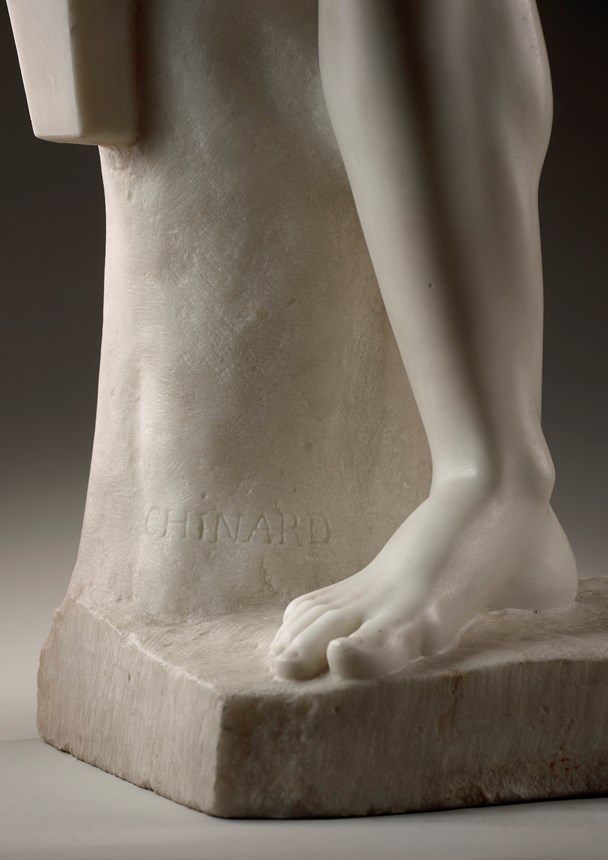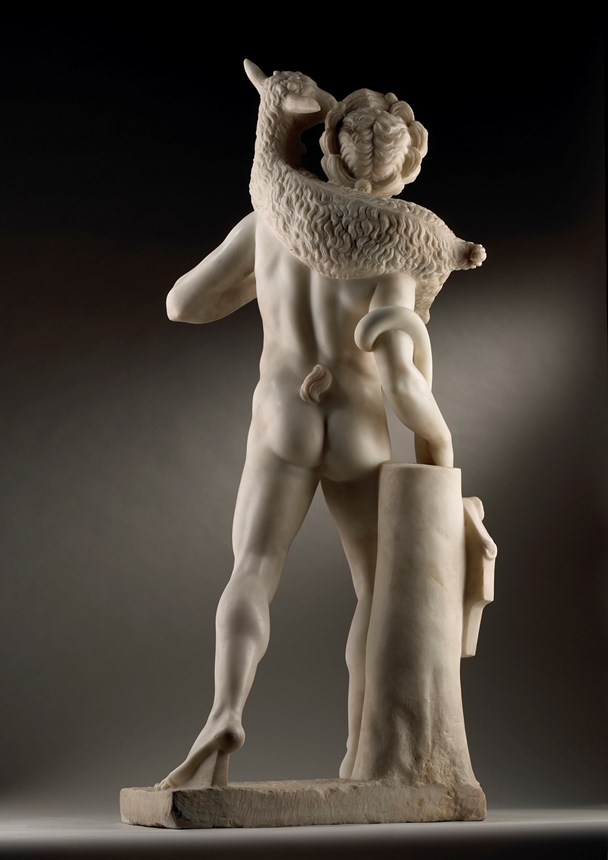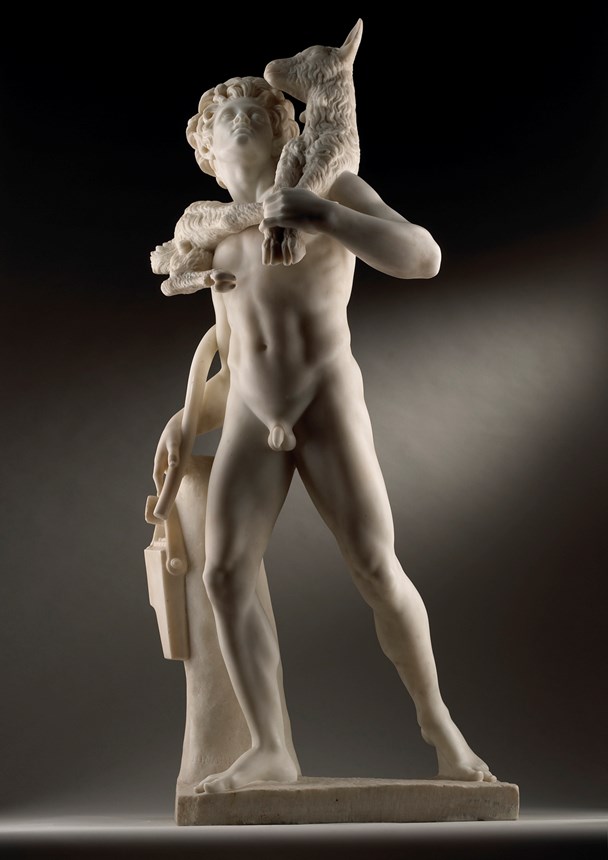This exquisitely modelled group of a Faun carrying a kid goat upon his shoulders, was carved by the pioneering Neoclassical sculptor Joseph Chinard (1756 – 1813), after one of the most revered antiquities that were formerly in the collections of Queen Christina of Sweden, then Livio Odescalchi and later, King Felipe V of Spain, at Palacio de La Granja de San Ildefsonso, Segovia.
Joseph Chinard was one of the greatest portraitists of his age. Born in Lyons to a family of silk merchants, he first trained under the painter Donat Nonotte at the Ecole Royale de Dessin in Lyons. He then worked with the local sculptor Barthélemy Blaise (1738-1819) and by 1780 he was working independently. Thanks to a local patron Chinard was able to go to Rome, where he remained until 1787, with a further visit in 1791-92, when he was briefly imprisoned for having upset the papal authorities. Back in Lyons Chinard received numerous public commissions and put his art to the service of the French Revolution. He visited Paris for the first time in 1795 and became part of the circle of the Lyonnais banker Jacques Récamier, whose beautiful wife, Juliette, would be the sitter for some of his most exquisite portrait busts. During the Consulate and the Empire Chinard enjoyed tremendous success. Napoleon’s military campaigns offered him a new heroic iconography and he received a number of public commissions while producing portrait busts of members of the Imperial court. During the last five years of his life, Chinard divided his time between Paris and Lyons, exhibiting regularly at the Paris Salon. Most of the works exhibited were portrait busts, forming a remarkable gallery of the personalities of early nineteenth-century France. Chinard’s mastery of marble carving and terracotta modelling enabled him to create distinctive images combining stylization and realism.
The present sculpture is signed by the artist on the tree trunk, an element that also appears on the original composition and acts as a creative way in which to introduce a weight-bearing support for the Faun’s figure. The size of Chinard’s version is closely comparable to the ancient archetype, which is now exhibited at the Museo del Prado, Madrid (inv. no. E00029). Chinard has managed to convey the wonderful proportions of the original, capturing the male form in a magnificent, idealised state, as the Faun strides forward in an elegant, classical manner. The ancient example is considered to be a Roman copy of a Hellenistic original belonging to the second school of Pergamus (160-150 B.C.). The subject depicts the mythological creature known as a Faun, or Satyr, whose half-animal nature is indicated by his pointed ears, horns and the tail on his back. The figure holds a young goat on his shoulders, possibly as part of a Bacchanalian festival in honour of the god Dionysus. The work was discovered in Rome around 1675 and restored shortly afterwards by Ercole Ferrata (1610 - 1686).
As a much-revered example of ancient classical sculpture, versions of the Faun and Kid have been included in the most prestigious decorative schemes of private residences, artistic institutions and academies of Western Europe. Therefore, Chinard could have encountered these and made his own version, without necessarily studying the original at King Felipe V’s San Ildefonso Palace, where it would have been throughout Chinard’s lifetime. For example, Anselme Flamen had made a copy for Versailles circa 1685 and Pierre Le Pautre (1659 – 1744) had executed a version for Marly in 1685, whilst the French Academy in Rome had a plaster cast of it, which Chinard could have seen after his arrival in the city in 1784. In Rome, like many ambitious young artists, he made copies of the most famous antiquities in order to learn the secrets of the ancients.














